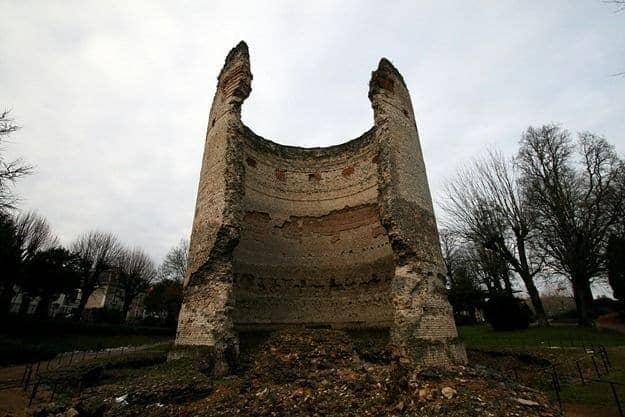If the title of this blog post makes little sense to you, then you should pause your whole life for a couple of hours and go watch Monty Python’s Life of Brian. Done that? Good.
Perigueux is a town with a remarkably hard to spell name in the heart of France’s Dordogne. It is the administrative capital of the region, and has held the title of capital for some time, ever since 200BC in fact, back when the Gauls ran France.
Of course, the Romans put a bit of an end to that, with their rampant empire building, so for a few hundred years this was a serious Roman city, before the Romans gave up the whole empire thing and moved on to driving funky scooters and coming up with romance.

After the Romans came that dark bit of history that no-one seems to know much about, after which came the Middle Ages, during which time all kinds of embellishments appeared around the city, like the Cathedral, which is one of the sights on the Santiago de Compostela pilgrimage.
What all this history means is that Perigueux is a rather interesting place to wander around, filled as it is with relics from over 2000 years of history. So wander we did.
The initial approach to Perigueux is, it has to be admitted, not totally exciting. The town has sprawled beyond its Roman and medieval roots and moved on to being filled with the sort of large commercial parks that you would expect to find in any big town.
Close your eyes as you come into the town though, and all is well. Assuming someone else is driving of course. Or you’re reading this in the future where driverless cars have become the norm.

There are two main parts to the city that are of interest to the visitor – the old crumbling roman ruins, and the slightly newer and less crumbly medieval bits.
The Roman Bits
We started with the crumbly Roman ruins. We visited the remains of the temple of Vesunna, a Gallic goddess, which was built in the 2nd century AD. This is a fairly imposing bit of construction, measuring 27 metres in both height and in diameter. The original temple would have been much bigger – now only the central and most sacred part remains. And it looks good, for its age.

Beyond the temple we visited the very crumbly remains of the amphitheatre, now a public park, which has a children’s playground in the middle and the ruins of the original seating around the rim. This was actually quite weird to walk around – the mix of ancient and new in the same place seemed quite out of place. Try imagining someone popping a couple of swings in the middle of the coliseum for an idea of what I mean.
After exploring further Roman ruins, and the burnt remains of the 12th century Barriere Castle, sacrificed in one of the regions wars of religion, we headed up to the medieval town centre.
The Medieval Bits
This is absolutely dominated by the St Front Cathedral – a UNESCO World Heritage site. This is more impressive on the outside than the in, covered as it is in little cupolas and domes. Inside it is cavernously vast and sparsely decorated, a far cry from the usual lavishness one finds in these places.
Around the cathedral the twisty mazes of the largely pedestrian only medieval town wind and wind, these are an explorers paradise, with countless little shops and restaurants tucked away to be discovered, and endless scope for wandering. Which we did, at some length, before finding somewhere to fill ourselves with excellent French food.

If you’re visiting the area, Perigueux is a must visit. It’s easy to get to and from, having both a train station and airport, and forms an excellent base for exploring the region. Beyond the town, there are no end of sights to see, from the town of Brantome to the endless castles of the region. You won’t run out of things to do!
Leave a Reply